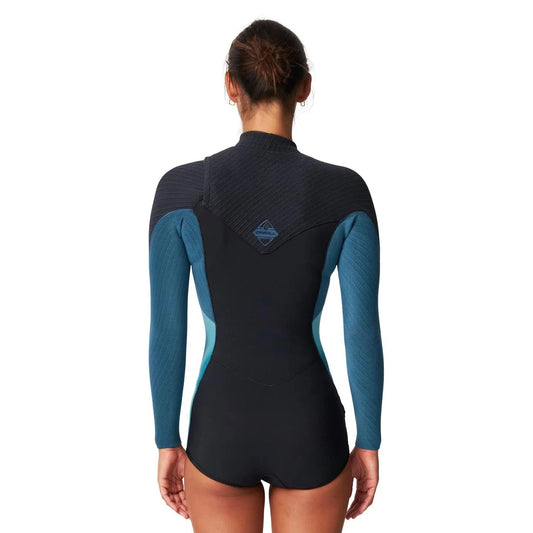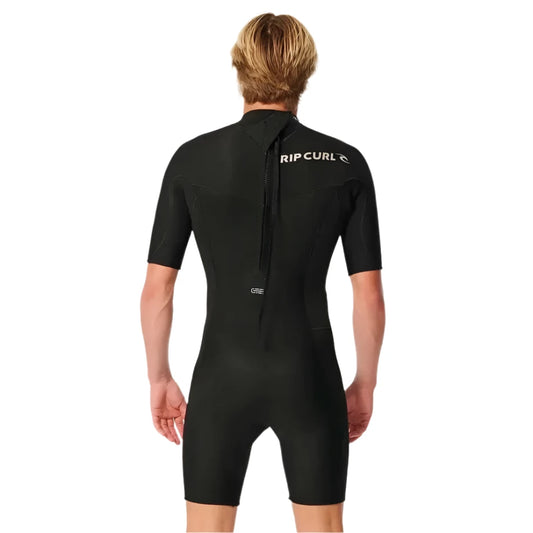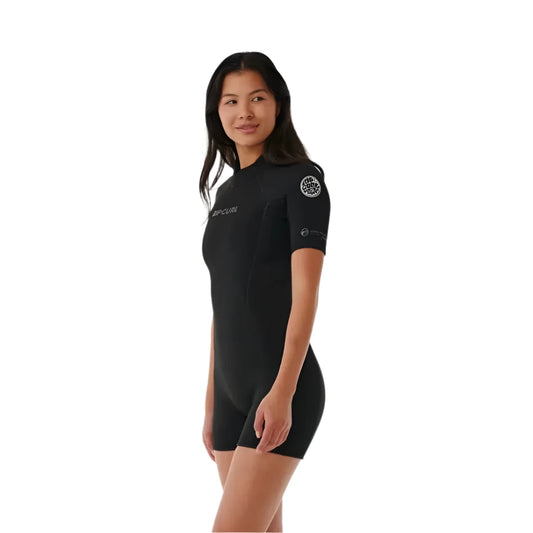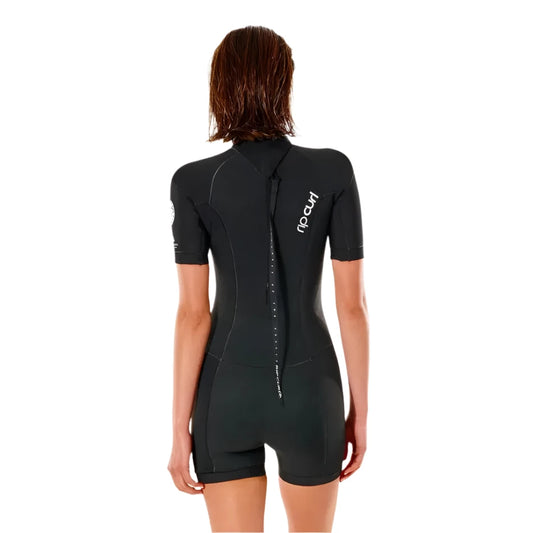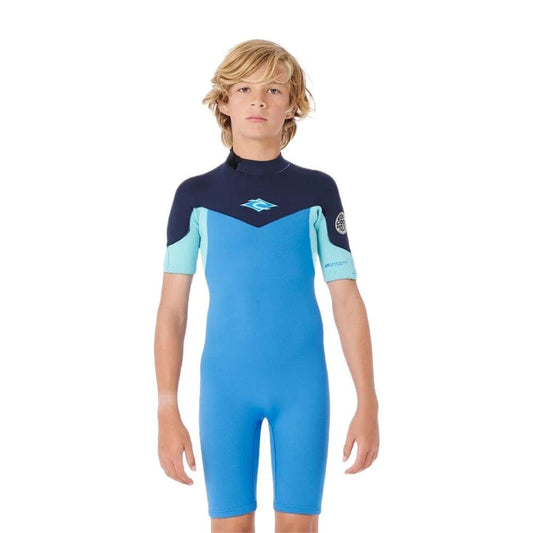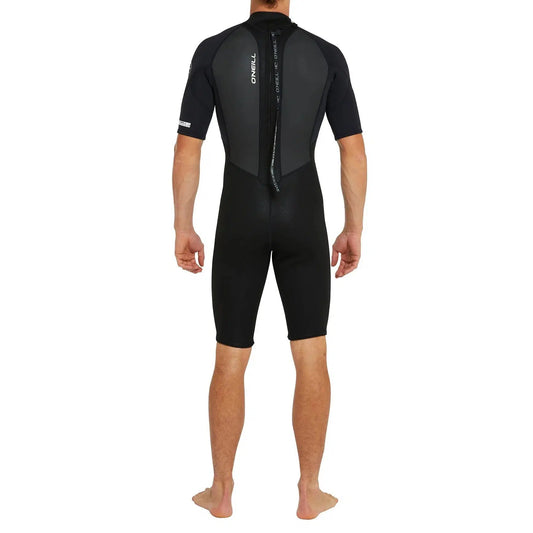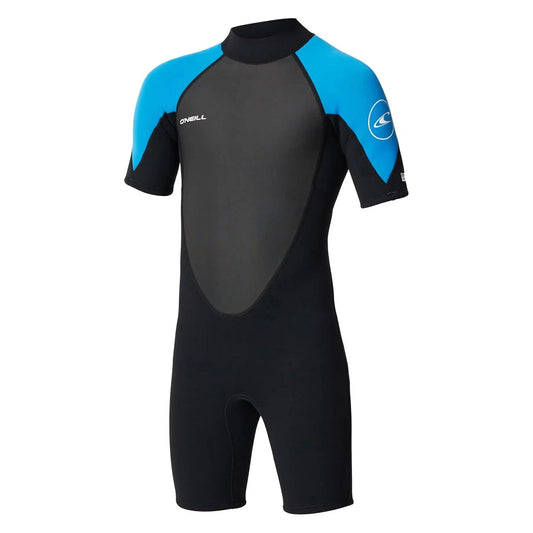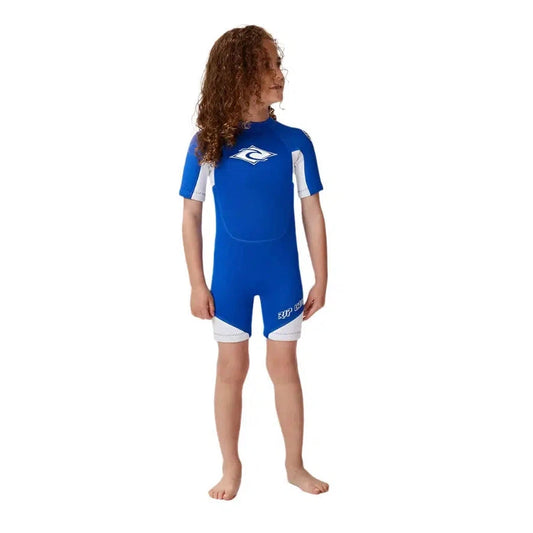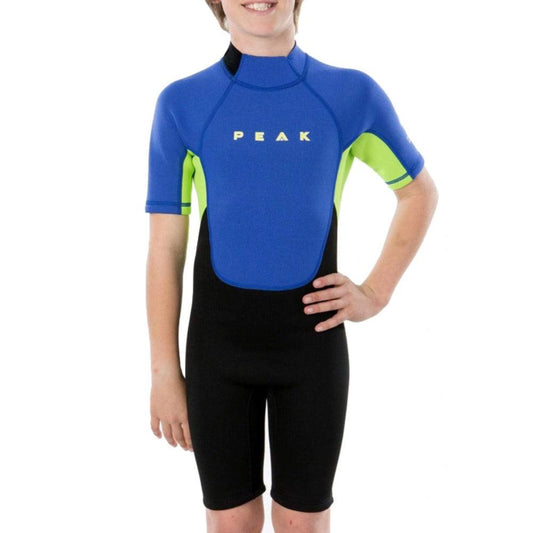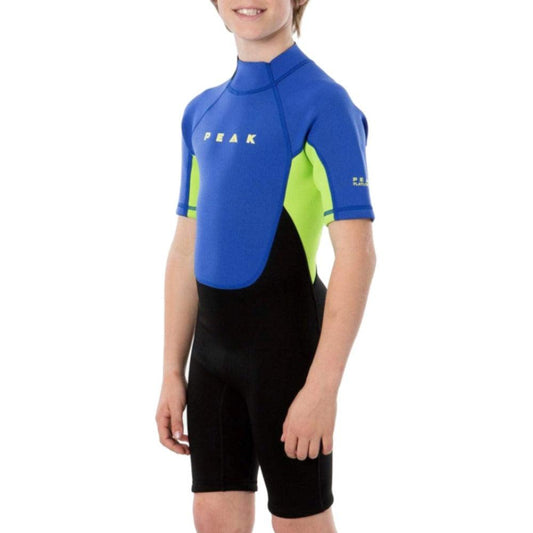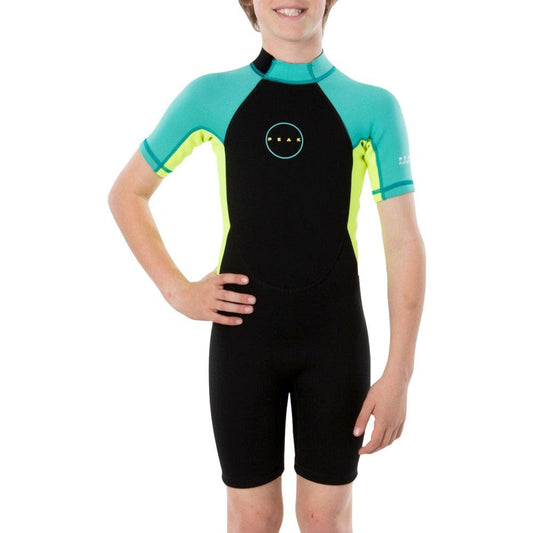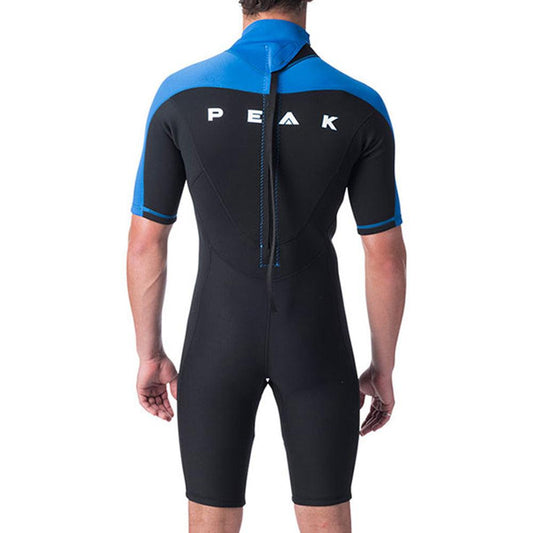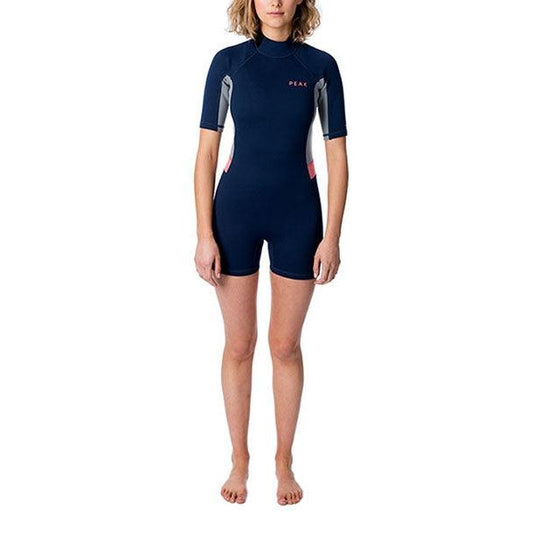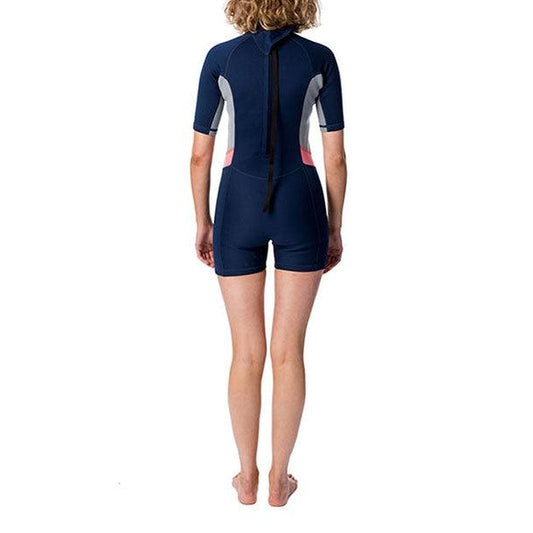
Collection: Springsuits
-
2025 O'Neill Womens Hyperfreak CZ LS 2mm Springsuit
Regular price $369.99 AUDRegular priceUnit price / per- $369.99
- $369.99
- $369.99
-
2024 Xcel Comp+ Long Sleeve 2mm Springsuit
Regular price $299.99 AUDRegular priceUnit price / per- $299.99
- $299.99
- $299.99
-
Rip Curl Dawn Patrol 2mm Back Zip Springsuit
Regular price $249.99 AUDRegular priceUnit price / per- $249.99
- $249.99
- $249.99
- $249.99
- $249.99
-
2025 O'Neill Bahia BZ LS Boyleg 2mm Springsuit
Regular price $229.99 AUDRegular priceUnit price / per- $229.99
- $229.99
- $229.99
- $229.99
-
Rip Curl Womens's Dawn Patrol 2/2 Eco Springsuit
Regular price $199.99 AUDRegular priceUnit price / per- $199.99
- $199.99
- $199.99
-
Rip Curl Womens's Dawn Patrol 2/2 Springsuit
Regular price $199.99 AUDRegular priceUnit price / per- $199.99
- $199.99
- $199.99
- $199.99
- $199.99
-
Rip Curl Boys Dawn Patrol B/Zip 2mm Springsuit
Regular price $169.99 AUDRegular priceUnit price / per- $169.99
- $169.99
- $169.99
- $169.99
- $169.99
-
2025 O'Neill Reactor 2 BZ SS 2mm Springsuit
Regular price $159.99 AUDRegular priceUnit price / per- $159.99
- $159.99
- $159.99
- $159.99
-
2025 O'Neill Womens Reactor 2 BZ SS 2mm Springsuit
Regular price $159.99 AUDRegular priceUnit price / per- $159.99
- $159.99
- $159.99
- $159.99
- $159.99
- $159.99
- $159.99
- $159.99
-
2025 O'Neill Boys Reactor 2 BZ SS 2mm Springsuit
Regular price $119.99 AUDRegular priceUnit price / per- $119.99
- $119.99
- $119.99
- $119.99
- $119.99
- $119.99
- $119.99
- $119.99
- $119.99
- $119.99
- $119.99
- $119.99
- $119.99
- $119.99
-
2025 O'Neill Girls Reactor 2 BZ SS 2mm Springsuit
Regular price $119.99 AUDRegular priceUnit price / per- $119.99
- $119.99
- $119.99
- $119.99
-
Ripcurl Groms Omega BZ 1.5mm Springsuit
Regular price $89.99 AUDRegular priceUnit price / per- $89.99
- $89.99
- $89.99
- $89.99
- $89.99
- $89.99
- $89.99
- $89.99
- $89.99
- $89.99
-
2023 Peak Energy Boys Springsuit
Regular price $79.99 AUDRegular priceUnit price / per- $79.99
- $79.99
- $79.99
- $79.99
- $79.99
- $79.99
- $79.99
-
2025 Peak Energy Girls S/S Springsuit
Regular price $79.99 AUDRegular priceUnit price / per- $79.99
- $79.99
- $79.99
- $79.99
- $79.99
- $79.99
-
Peak Energy B/Zip Springsuit
Regular price $50.00 AUDRegular priceUnit price / per$79.99 AUDSale price $50.00 AUD$50.00 $79.99- $50.00$79.99
- $50.00$79.99
- $50.00$79.99
- $50.00$79.99
Sale -
Peak Ladies Energy S/S Spring Wetsuit
Regular price $50.00 AUDRegular priceUnit price / per$79.99 AUDSale price $50.00 AUD$50.00 $79.99- $50.00$79.99
- $50.00$79.99
Sale
FAQs
Will wetsuits keep you warm?
Yes, wetsuits keep you warm by trapping a thin layer of water between your skin and the neoprene material. Your body heats up this water, creating an insulating barrier that helps maintain warmth in cold water. However, wetsuits don’t generate heat—they just help you retain body warmth.
How Wetsuits Keep You Warm:
1. Neoprene Insulation: Wetsuits are made of neoprene, a material that contains tiny air bubbles, reducing heat loss and keeping your body insulated.
2. Trapped Water Layer: A small amount of water gets inside the suit, warms up from body heat, and acts as an insulator.
3. Thickness Matters: Wetsuits come in different thicknesses (measured in millimeters) to match various water temperatures. For example:
• 3/2mm – Good for cool waters (60-68°F / 15-20°C)
• 4/3mm – Colder waters (50-60°F / 10-15°C)
• 5/4mm or 6/5mm – Very cold waters (below 50°F / 10°C)
Limitations of Wetsuits:
• Not completely waterproof – You’ll still feel the cold at first.
• Lose effectiveness if too loose – A well-fitted wetsuit prevents excessive water from flushing in and out.
• Extreme cold requires extra gear – In freezing conditions, you’ll need booties, gloves, and a hood.
Overall, a properly fitted wetsuit with the right thickness will keep you warm and comfortable, allowing you to surf or swim in colder waters for extended periods.
Who made wetsuits?
Wetsuits were invented in the early 1950s by Hugh Bradner, a physicist and researcher at the University of California, Berkeley. He originally developed the wetsuit for Navy divers, but his design soon found its way into the surfing and diving communities.
Key Figures in Wetsuit Development:
• Hugh Bradner (1951): Considered the father of the modern wetsuit, he discovered that neoprene, a synthetic rubber, could trap heat by insulating the body.
• Jack O’Neill (1952): A surf enthusiast who popularized wetsuits for surfers. He founded O’Neill, one of the first wetsuit companies, in Santa Cruz, California.
• Bob Meistrell & Bill Meistrell (1953): Co-founders of Body Glove, they developed some of the first commercial wetsuits specifically for water sports.
How Wetsuits Changed Surfing & Diving
Before wetsuits, cold water severely limited surfing and diving. The invention allowed people to stay in the water longer, leading to the growth of cold-water surfing and year-round surf culture.
Today, wetsuits have evolved with advanced neoprene, seamless stitching, and thermal linings, making them warmer, stretchier, and more comfortable than ever.
Why wetsuits are black?
Wetsuits are traditionally black for several practical reasons:
1. Heat Absorption & Warmth
Black absorbs and retains heat from the sun better than lighter colors. This helps keep surfers and divers warmer, especially in cold water.
2. UV Resistance & Durability
Neoprene, the material used in wetsuits, naturally degrades over time due to UV exposure. Black pigment provides better UV resistance, making the wetsuit last longer compared to lighter-colored alternatives.
3. Material & Manufacturing Efficiency
Neoprene is naturally a dark color, and black is the easiest and most cost-effective color to produce. Dyeing it into lighter colors adds extra steps and costs.
4. Hides Wear & Tear
Black wetsuits are less likely to show stains, fading, or discoloration from salt, sand, and sun exposure, helping them look newer for longer.
5. Traditional & Market Influence
Since the first wetsuits were black, the color became the industry standard. Over time, black wetsuits became associated with performance and reliability, making them the go-to choice for surfers, divers, and swimmers.
Are Wetsuits Only Black?
Not anymore! Many brands now offer wetsuits in different colors and patterns, but black remains the most common due to its durability, warmth, and classic look.
Are wetsuits waterproof?
No, wetsuits are not waterproof—they are water-resistant but designed to let in a small amount of water. This thin layer of water gets trapped between your skin and the neoprene material, where your body heat warms it up, creating an insulating barrier to keep you warm.
How Wetsuits Work?
1. Water Gets In: A small amount of water seeps in through openings (neck, wrists, ankles, seams).
2. Water Heats Up: Your body warms the trapped water, preventing heat loss.
3. Neoprene Insulation: The neoprene material contains tiny air bubbles that help insulate and retain warmth.
Are There Fully Waterproof Suits?
Yes! If you need complete dryness, a dry suit is the better option. Dry suits are fully sealed and keep all water out, making them ideal for freezing temperatures and extreme diving conditions. However, they are bulkier than wetsuits and don’t provide the same flexibility.
So while wetsuits won’t keep you completely dry, they are designed to keep you warm even when wet!
Why are wetsuits so expensive?
Wetsuits can be expensive due to the materials, technology, and craftsmanship that go into making them perform well in cold water while remaining flexible and durable. Here’s why they cost so much:
1. High-Quality Neoprene & Materials
• Premium wetsuits use high-performance neoprene, such as Yamamoto neoprene, which is lighter, stretchier, and warmer than standard neoprene.
• Some wetsuits feature air cell or limestone-based neoprene, which enhances insulation and reduces water absorption.
2. Advanced Stitching & Seam Sealing
• Cheap wetsuits use flatlock stitching, which lets more water in. High-end wetsuits use blind stitching, glued seams, and liquid taping to improve warmth and durability.
• Fully sealed seams (glued, taped, or welded) make wetsuits more expensive but also prevent water from seeping in, keeping you warmer.
3. Thermal Linings & Quick-Dry Technology
• Many high-end wetsuits have fleece-like thermal linings inside to retain heat better and dry faster between sessions.
• Quick-dry linings make wetsuits more comfortable and warmer, but they also add to the cost.
4. Flexibility & Performance
• The more stretchy and flexible a wetsuit is, the better it feels while surfing.
• Top-tier wetsuits use multi-panel designs and strategically placed stretchy materials to enhance movement.
5. Brand Research & Development
• Leading wetsuit brands like O’Neill, Rip Curl, Patagonia, and Xcel invest in hydrodynamic testing, eco-friendly materials, and new seam technologies to improve wetsuit performance.
• Patagonia, for example, uses Yulex, a plant-based rubber, making their suits more sustainable but also pricier.
6. Durability & Longevity
• A high-end wetsuit lasts much longer than a cheap one, making it a better long-term investment.
• Better materials and construction mean fewer rips, less water absorption, and more warmth over time.
Are Expensive Wetsuits Worth It?
Yes, if you surf or dive regularly. A cheap wetsuit may work for casual use, but a high-quality wetsuit will keep you warmer, drier, and more comfortable, especially in cold conditions. If you’re serious about your time in the water, a good wetsuit is worth the investment!
Can wetsuits go in the washing machine?
No, wetsuits should not go in the washing machine. The agitation, heat, and harsh detergents can damage the neoprene, weaken the seams, and reduce the suit’s flexibility and lifespan.
How to Properly Clean a Wetsuit?
1. Rinse with Fresh Water – After each use, rinse your wetsuit thoroughly with cool or lukewarm fresh water to remove salt, sand, and chlorine.
2. Use Wetsuit Cleaner or Mild Soap – If it smells or needs a deeper clean, use a wetsuit-specific shampoo or mild soap (never harsh detergents).
3. Hand Wash Only – Fill a tub or sink with fresh water, add wetsuit cleaner, and gently scrub inside and out.
4. Hang to Dry Properly – Hang it inside out on a wide hanger (not by the shoulders) in a shaded, ventilated area. Avoid direct sunlight, as UV rays can break down neoprene.
5. Never Use Hot Water, a Dryer, or a Washing Machine – Heat damages neoprene and weakens glue and seams.
How Often Should You Wash a Wetsuit?
• After every session – Quick freshwater rinse.
• Every few weeks – Deep clean with wetsuit shampoo if used regularly.
• If it smells bad – Soak in a mix of wetsuit cleaner and water for 20-30 minutes before rinsing.
Taking care of your wetsuit properly will extend its lifespan, keep it flexible, and prevent bad odors!
Can wetsuits be repaired?
Yes, wetsuits can be repaired, and fixing small tears or damaged seams can significantly extend their lifespan. Depending on the damage, you can either repair it yourself or take it to a professional wetsuit repair service.
Common Wetsuit Repairs & Fixes
1. Small Tears or Holes (Neoprene Rips)
✅ How to Fix:
• Use wetsuit repair glue (like Neoprene Cement or Aquaseal).
• Apply a thin layer to both sides of the tear, let it dry for a few minutes, then press together.
• For larger holes, use a neoprene patch with glue for extra reinforcement.
2. Seams Coming Apart (Unstitching or Water Leakage)
✅ How to Fix:
• If the stitching is intact but water is leaking, apply wetsuit seam sealer to reinforce it.
• If the stitching is damaged, use neoprene thread and a curved needle to resew it, then seal it with wetsuit glue.
3. Zipper Issues (Stuck or Broken Zipper)
✅ How to Fix:
• Clean the zipper with freshwater and apply zipper lubricant (like beeswax or silicone spray) to keep it running smoothly.
• If the zipper is broken, it’s best to have it replaced by a professional wetsuit repair service.
4. Large Tears or Panel Damage
✅ How to Fix:
• For big rips, using a neoprene patch and strong wetsuit glue works best.
• If a large panel is torn, consider sending it to a professional for a stitched and sealed repair.
DIY vs. Professional Repair
• DIY repairs work great for small holes, seam splits, or minor tears.
• Professional repairs are better for major damage, large rips, or zipper replacements.
Preventing Wetsuit Damage
✔ Always put on and take off your wetsuit carefully (don’t pull too hard).
✔ Rinse with freshwater after every use.
✔ Store in a cool, dry place, avoiding direct sunlight.
✔ Avoid standing or kneeling on rough surfaces to prevent tears.
By properly maintaining and repairing your wetsuit, you can extend its life and save money on replacements!
Can wetsuits go in the dryer?
No, wetsuits should never go in the dryer. The heat and tumbling can damage the neoprene, weaken the seams, and reduce flexibility, making the suit less effective and shortening its lifespan.
Why You Shouldn’t Put a Wetsuit in the Dryer:
🚫 Heat Damage: High temperatures break down neoprene, making it stiff and brittle.
🚫 Weakens Seams & Glue: The glue holding the seams together can melt or degrade.
🚫 Tumbling Stress: The dryer’s movement can stretch and distort the wetsuit’s shape.
How to Dry a Wetsuit Properly:
✔ Hang it on a Wide Hanger: Avoid thin hangers that can stretch the shoulders.
✔ Turn it Inside Out First: Dry the inside first, then flip it back after a few hours.
✔ Use a Shaded, Well-Ventilated Area: Direct sunlight can also damage neoprene, so dry it in the shade.
✔ Speed Up Drying with a Fan or Towel: Lay a dry towel inside or use a fan to increase airflow.
Drying your wetsuit correctly will keep it flexible, warm, and lasting longer!
Can wetsuits be used in pools?
Yes, wetsuits can be used in pools, but prolonged exposure to chlorine can damage the neoprene over time.
Things to Consider When Using a Wetsuit in a Pool:
✔ Protection & Warmth – A wetsuit can help keep you warm in colder pools, especially for activities like swimming training, water therapy, or diving practice.
✔ Buoyancy – Neoprene provides extra floatation, which can be helpful for swimming but may feel restrictive for some strokes.
✔ Chlorine Damage – Pool chlorine can break down neoprene over time, making it stiffer and less elastic.
✔ Proper Rinsing – Always rinse your wetsuit thoroughly with fresh water after using it in a pool to remove chlorine and extend its lifespan.
Best Wetsuits for Pools:
• If you plan to swim in a pool often, consider chlorine-resistant wetsuits or triathlon wetsuits, which are designed for frequent swimming and have more flexibility.
• Shorty or sleeveless wetsuits can be more comfortable for pool use, as they allow better arm movement.
👉 Bottom line: Yes, you can use a wetsuit in a pool, but rinse it well after each use to prevent chlorine damage! 🚿


